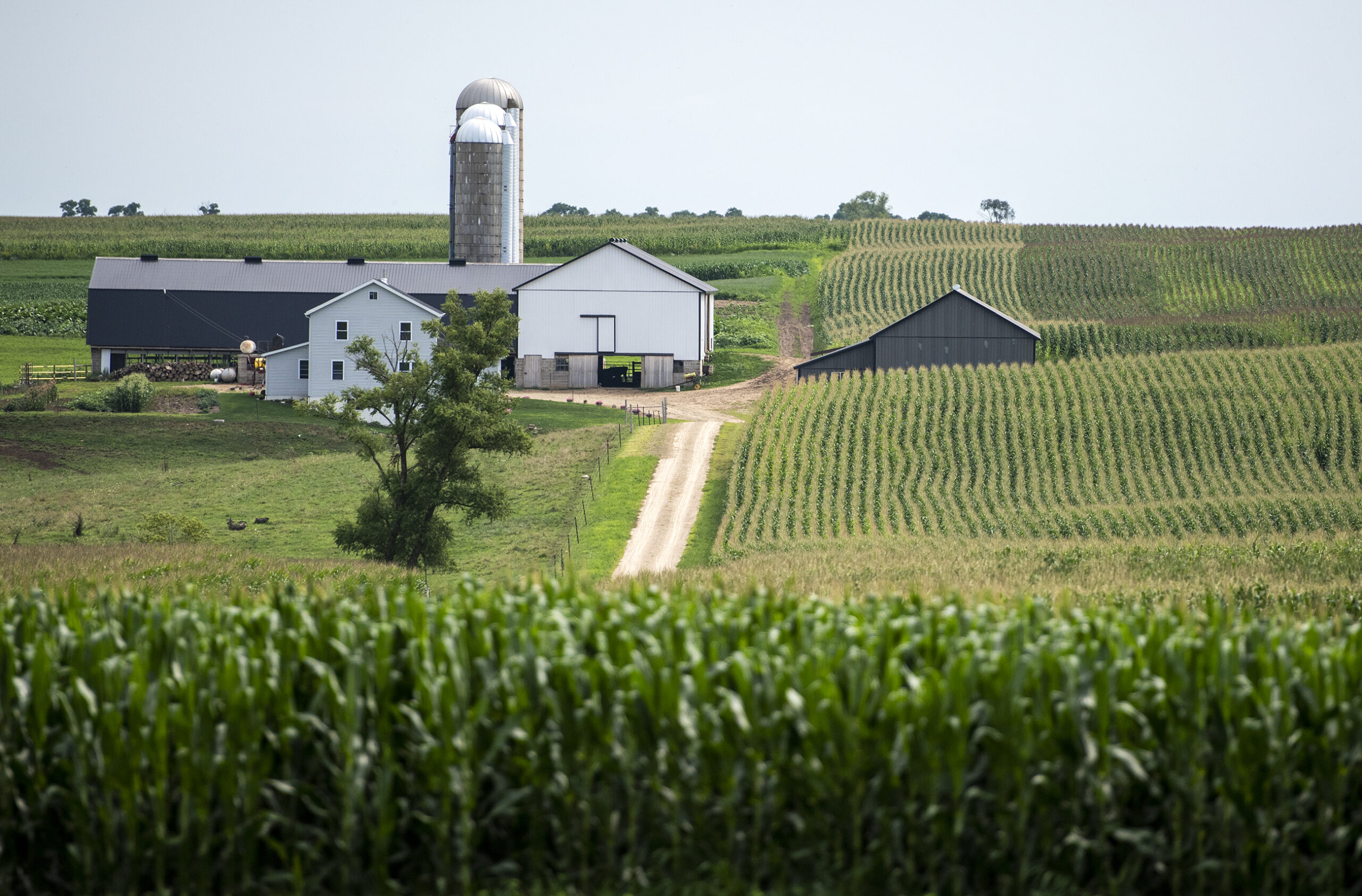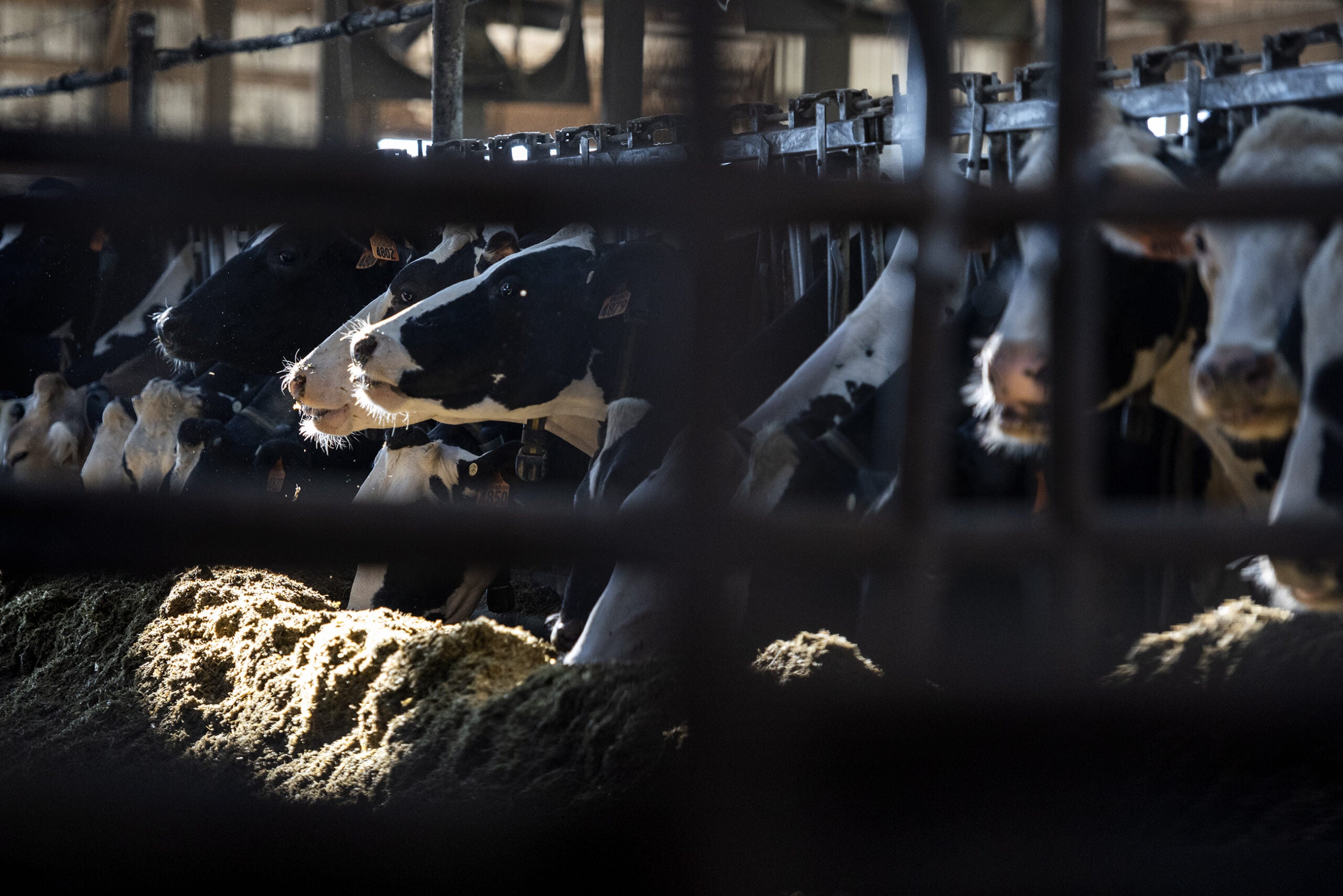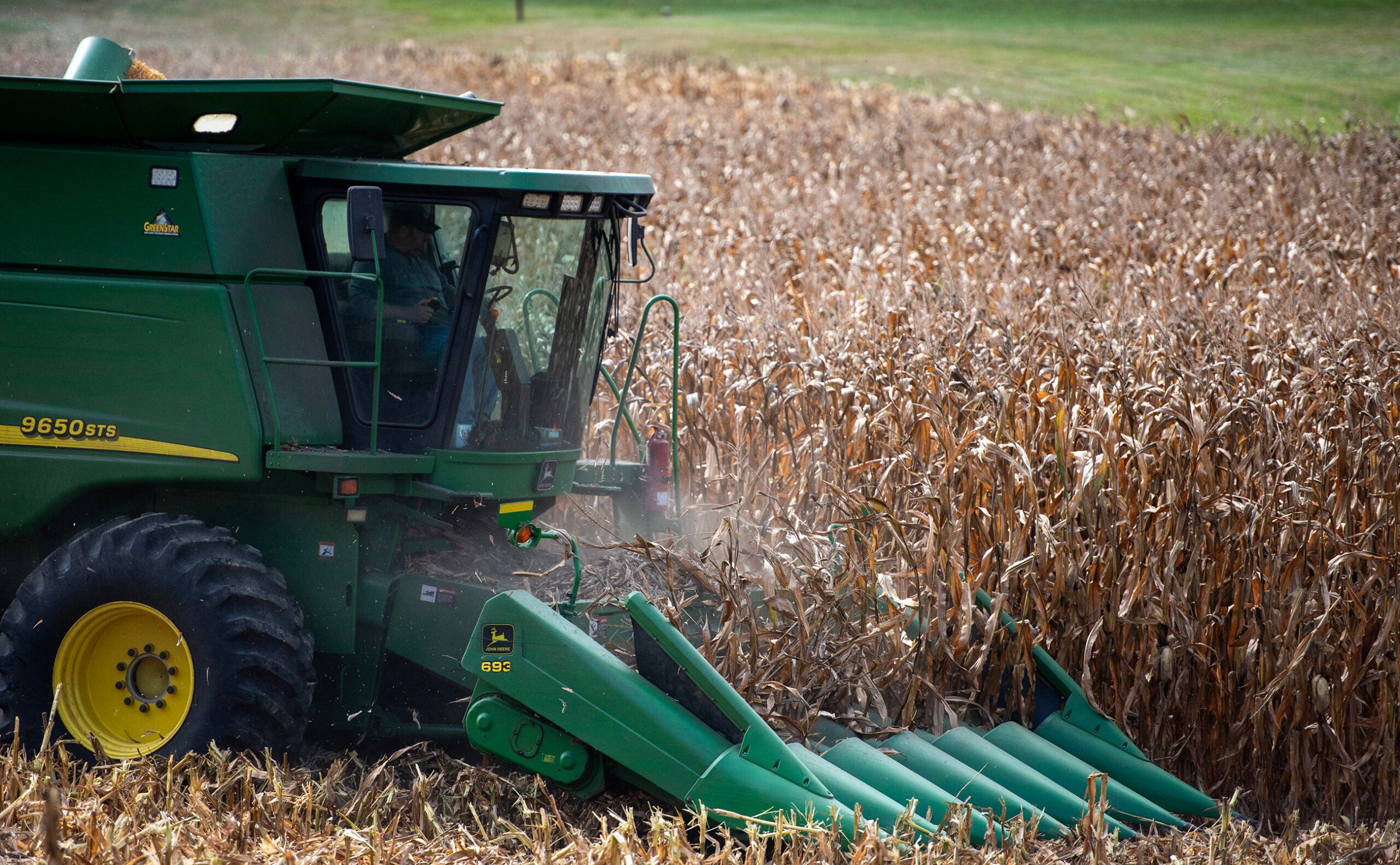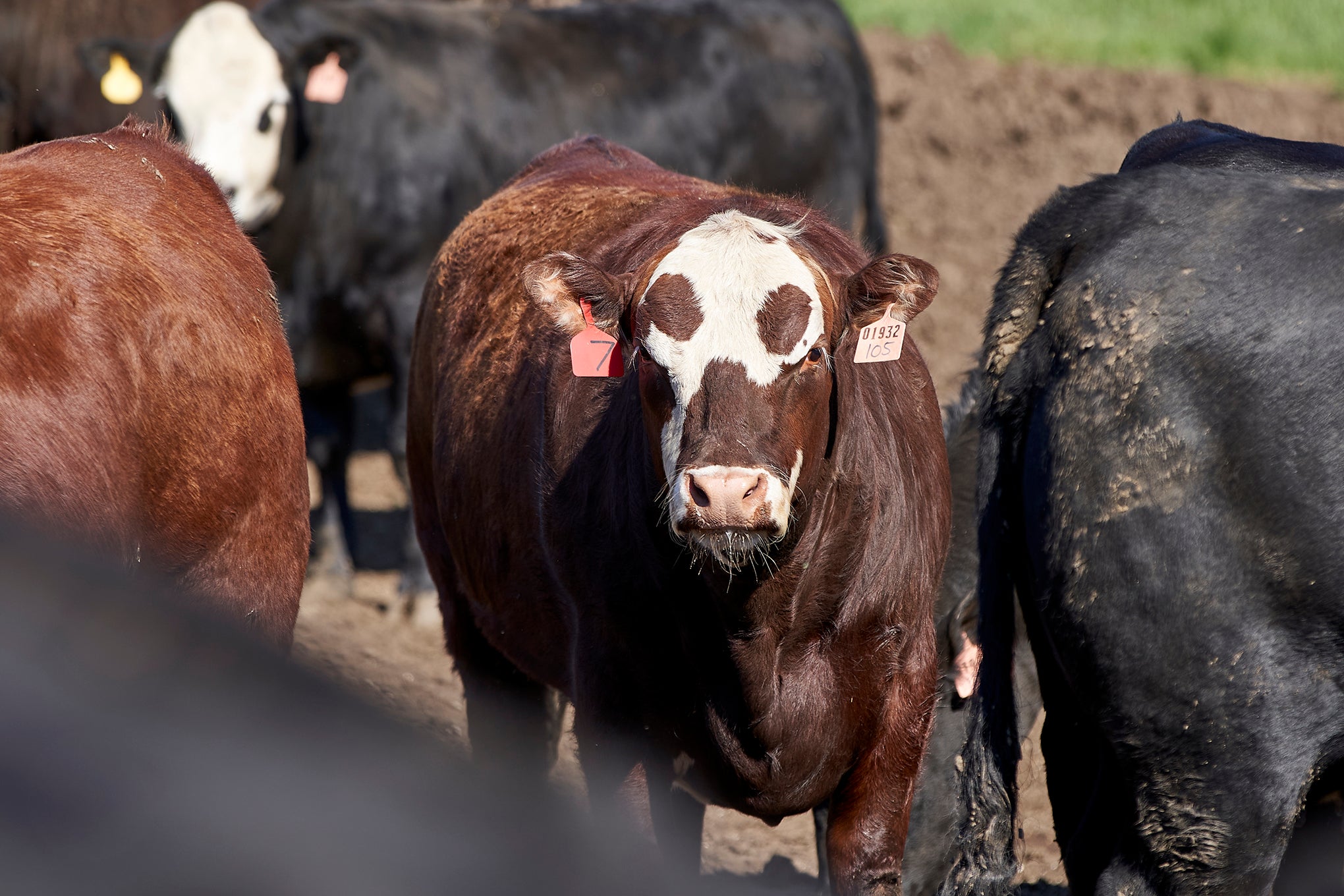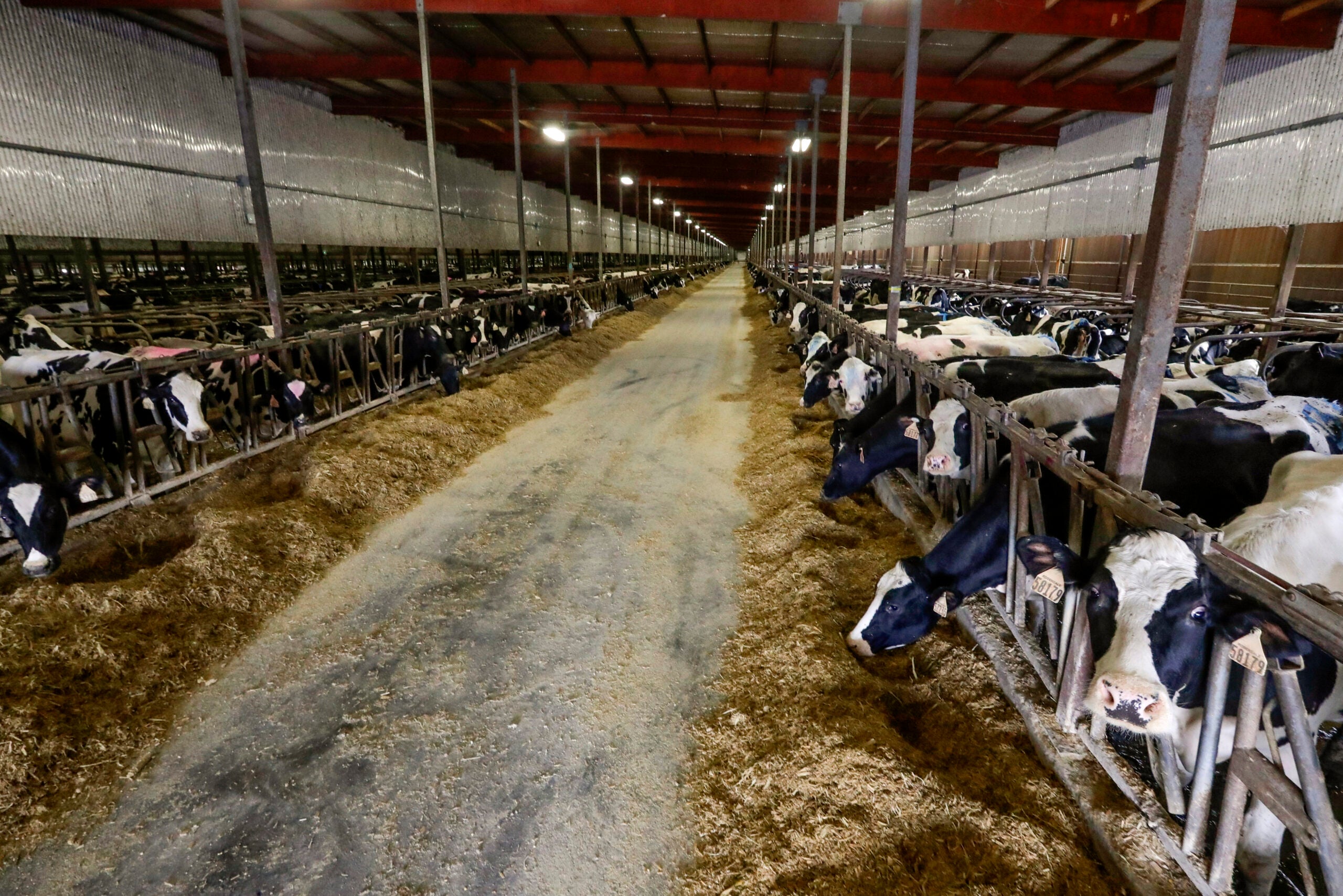Farmer groups and federal lawmakers from Wisconsin are weighing in on their priorities for this year’s farm bill.
The federal legislation is passed roughly every five years and funds a wide range of programs in the U.S. Department of Agriculture, from crop insurance to grants for rural communities to federal food assistance. The last version, the Agriculture Improvement Act of 2018, was enacted in December 2018 and extends through fiscal year 2023.
Tyler Wenzlaff, director of national affairs for the Wisconsin Farm Bureau Federation, said his organization’s top priority is returning the formula for pricing milk to what it was before the last farm bill.
News with a little more humanity
WPR’s “Wisconsin Today” newsletter keeps you connected to the state you love without feeling overwhelmed. No paywall. No agenda. No corporate filter.
The price of milk sold for beverages, called Class I, is based on the advance prices for cheese, which is Class III, or butter and dry milk powder, called Class IV. The old formula took whichever price class was higher, but the 2018 farm bill changed the formula to average the two prices together as a way to help the milk industry improve their risk management strategies.
Wenzlaff said the two price classes typically mirror each other when increasing or declining. But federal food programs during the COVID-19 pandemic, like the Farmers to Families Food Boxes, pushed the price of cheese much higher, which ultimately caused farmers to lose money from their milk checks rather than receiving their usual premium for milk.
“You have this whole pricing system that is very convoluted, very complicated. And all sudden, you have some government intervention and it moves prices that traditionally don’t move in two directions and they’re going all out of whack,” Wenzlaff said. “One of the things that we’re looking for is greater transparency in the system.”
He said the Farm Bureau is hoping to see a bigger overhaul of the federal milk marketing order system through the USDA. But the group is hoping lawmakers will at least put the old pricing formula back in place while the industry works with federal officials on a new way forward.
Wisconsin Farmers Union president Darin Von Ruden said his group is also pushing for bigger changes for the dairy industry in the next farm bill, including a more farm-friendly pricing structure. But he said the dairy industry also has to address the decades-long problem of having an oversupply of milk.
“We can’t continue down this road of status quo because it’s just meaning fewer and fewer farmers, which means that our diversity of production is really disappearing,” he said. “Ultimately, I think that’s going to affect how consumers feel about the products that we produce, plus probably having an inadequate supply at some point.”
Von Ruden said increasing funding for conservation programs is one of the Farmers Union’s top priorities in the next farm bill.
“For every three farmers that apply for funding for conservation programs, only one farmer is actually getting dollars,” he said. “So there’s a real shortage on that side of the farm bill’s structure.”
Leaders of both of the House and Senate Agriculture committees have expressed a need for additional funding for farm bill programs. A letter by Senate ag leaders said improving safety nets for food and farm programs would help the USDA move away from one-time payments when something goes wrong, like those seen after retaliatory tariffs from China and other trading partners or during the COVID-19 pandemic. The letter reported the federal government has approved more than $90 billion in ad hoc assistance for farmers since 2018.
Wenzlaff said his group is just hoping to maintain current funding levels, but new funding could mean more agricultural research and expanded conservation practices. He said farmers don’t want to be reliant on government support, but there are times when one-time payments are needed to help producers get through a disaster.
He said the Farm Bureau is also hoping lawmakers will increase the reference prices used to calculate crop insurance payouts. Wenzlaff said the prices haven’t been looked at in decades, which means payouts don’t adequately reflect what a farmer could have gotten for their crops.
Farm bill could include funding for PFAS, mental health support, food assistance
Wisconsin’s federal lawmakers have their own priorities for the next farm bill.
Democratic U.S. Sen. Tammy Baldwin recently reintroduced the Healthy H20 Act, a bipartisan bill that would create grants for private well owners to test their water for contaminants and install a filtration system if contamination is found. Baldwin said the grant funding is needed in Wisconsin, where an increasing number of communities are testing their water and finding contamination.
“Several communities have found PFAS contamination. And I also want to point out that there’s certainly other contaminants we have in our water: lead in systems with lead pipes, nitrates, manure, etc.,” Baldwin said. “We’re looking at a strategy to make sure that everybody can feel confident that when they turn on their faucet that their drinking water is clean and safe.”
She said communities with municipal water systems often have more mitigation strategies when faced with contamination. But private well owners need help paying for the cost of testing their water and finding a solution if contamination is found.
Baldwin is also calling for renewed funding for the Farm and Ranch Stress Assistance Network, which works to connect producers and their families with stress assistance programs. It also helps train those in the ag industry to recognize the signs of someone struggling with their mental health. Last week, national farmer groups sent a letter in support of continued funding for the program, saying the network “is essential for serving populations where the need is great and resources are limited.”
Baldwin said there has been years of financial stress on small and medium-sized farms, especially in Wisconsin’s dairy industry.
“Folks worrying about losing their farm that’s been handed down through generations, folks struggling with extreme weather events and other challenges like tariff wars, etc. that have cut down on export opportunities. These challenges weigh upon people’s mental health and can create depression, which is compounded by isolation,” she said.
But passing a new farm bill likely won’t be easy. Republican leaders want to tighten work requirements for the Supplemental Nutrition Assistance Program as a way to cut down on government spending.
Baldwin said the COVID-19 pandemic highlighted the importance of nutrition programs and she said it’s essential lawmakers maintain support for the safety net. She pointed out that recipients only receive about $6 per day.
“The last time I was in the grocery store, I can’t imagine trying to be able to figure out what should be in my grocery cart that’s going to come in around that level and still provide for a day of nutrition,” she said. “So we have to be mindful of that. We obviously want to make sure that there’s not abuse of any program. But I think that the SNAP program is one of the most efficient ways of addressing food insecurity and hunger in America.”
More than 700,000 Wisconsin residents receive food assistance benefits and many anti-hunger advocates in the state have already expressed worry about how the end of additional benefits received during the pandemic will impact food insecurity in the state.
Wisconsin Public Radio, © Copyright 2025, Board of Regents of the University of Wisconsin System and Wisconsin Educational Communications Board.

